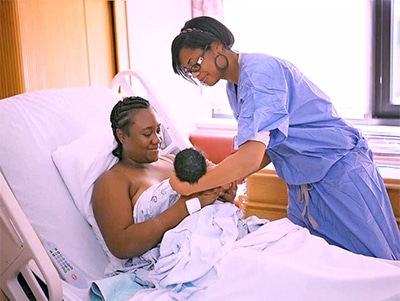INTERNATIONAL MEDICAL EXPERT’S STATEMENT ON CIRCUMCISION HEALTH BENEFITS

Cultural Bias in the AAP’s 2012 Technical Report and Policy Statement on Male Circumcision
by

Dr. Morten Frisch
Morten Frisch, Yves Aigrain, Vidmantas Barauskas, Ragnar Bjarnason, Su-Anna Boddy, Piotr Czauderna, Robert P.E. de Gier, Tom P.V.M. de Jong, Günter Fasching, Willem Fetter, Manfred Gahr, Christian Graugaard, Gorm Greisen, Anna Gunnarsdottir, Wolfram Hartmann, Petr Havranek, Rowena Hitchcock, Simon Huddart, Staffan Janson, Poul Jaszczak, Christoph Kupferschmid, Tuija Lahdes-Vasama, Harry Lindahl, Noni MacDonald, Trond Markestad, Matis Märtson, Solveig Marianne Nordhov, Heikki Pälve, Aigars Petersons, Feargal Quinn, Niels Qvist, Thrainn Rosmundsson, Harri Saxen, Olle Söder, Maximilian Stehr, Volker C.H. von Loewenich, Johan Wallander and Rene Wijnen
Published in Pediatrics April 2013, 131 (4) 796-800; DOI: https://doi.org/10.1542/peds.2012-2896
Conclusions on Circumcision Health Benefits
The AAP’s extensive report was based on the scrutiny of a large number of complex scientific articles. Therefore, while striving for objectivity, the conclusions drawn by the eight task force members reflect what these individual physicians perceived as trustworthy evidence. Cultural bias reflecting the normality of nontherapeutic male circumcision in the United States seems obvious. The conclusions of the AAP Technical Report and Policy Statement are far from those reached by physicians in most other Western countries. As mentioned, only one of the aforementioned arguments has some theoretical relevance in relation to infant male circumcision; namely, the questionable argument of UTI prevention in infant boys. The other claimed health benefits are also questionable, weak, and likely to have little public health relevance in a Western context, and they do not represent compelling reasons for surgery before boys are old enough to decide for themselves. Circumcision fails to meet the commonly accepted criteria for the justification of preventive medical procedures in children. The cardinal medical question should not be whether circumcision can prevent disease, but how disease can best be prevented.
AAP’s Statement of Circumcision Health Benefits
The AAP report lacks a serious discussion of the central ethical dilemma with, on 1 side, parents’ right to act in the best interest of the child on the basis of cultural, religious, and health-related beliefs and wishes and, on the other side, infant boys’ basic right to physical integrity in the absence of compelling reasons for surgery. Physical integrity is one of the most fundamental and inalienable rights a child has. Physicians and their professional organizations have a professional duty to protect this right, irrespective of the gender of the child.
Physicians on Circumcision Health Benefits
There is growing consensus among physicians, including those in the United States, that physicians should discourage parents from circumcising their healthy infant boys because nontherapeutic circumcision of underage boys in Western societies has no compelling health benefits, causes postoperative pain, can have serious long-term consequences, constitutes a violation of the United Nations’ Declaration of the Rights of the Child, and conflicts with the Hippocratic oath: primum non nocere: First, do no harm.
Abstract | Circumcision Health Benefits
The American Academy of Pediatrics recently released its new Technical Report and Policy Statement on male circumcision, concluding that current evidence indicates that the health benefits of newborn male circumcision outweigh the risks. The technical report is based on the scrutiny of a large number of complex scientific articles. Therefore, while striving for objectivity, the conclusions drawn by the eight task force members reflect what these individual physicians perceived as trustworthy evidence.
Seen from the outside, cultural bias reflecting the normality of nontherapeutic male circumcision in the United States seems obvious, and the report’s conclusions are different from those reached by physicians in other parts of the Western world, including Europe, Canada, and Australia. In this commentary, a different view is presented by non–US-based physicians and representatives of general medical associations and societies for pediatrics, pediatric surgery, and pediatric urology in Northern Europe.
Experts Find Scant Evidence For Circumcision Health Benefits

Authors:
Morten Frisch, MD, PhD (a,) Yves Aigrain, MD, PhD (b,) Vidmantas Barauskas, MD, PhD (c,) Ragnar Bjarnason, MD, PhD (d,) Su-Anna Boddy, MD(e,) Piotr Czauderna, MD, PhD(f,) Robert P.E. de Gier, MD(g,) Tom P.V.M. de Jong, MD, PhD (h,) Günter Fasching, MD (i,) Willem Fetter, MD, PhD (j,) Manfred Gahr, MD(k,) Christian Graugaard, MD, PhD(l,) Gorm Greisen, MD, PhD(m,) Anna Gunnarsdottir, MD, PhD(n,) Wolfram Hartmann, MD(o,) Petr Havranek, MD, PhD(p,) Rowena Hitchcock, MD(q,) Simon Huddart, MD (r,) Staffan Janson, MD, PhD(s,) Poul Jaszczak, MD, PhD(t,) Christoph Kupferschmid, MD(u,) Tuija Lahdes-Vasama, MD(v,) Harry Lindahl, MD, PhD(w,) Noni MacDonald, MD(x,) Trond Markestad, MD(y,) Matis Märtson, MD, PhD(z,) Solveig Marianne Nordhov, MD, PhD(aa,) Heikki Pälve, MD, PhD(bb,) Aigars Petersons, MD, PhD(cc) Feargal Quinn, MD(dd,) Niels Qvist, MD, PhD(ee,) Thrainn Rosmundsson, MD(ff,) Harri Saxen, MD, PhD(gg,) Olle Söder, MD, PhD(hh,) Maximilian Stehr, MD, PhD(ii,) Volker C.H. von Loewenich, MD(jj,) Johan Wallander, MD, PhD(kk,) and Rene Wijnen, MD, PhD(ll)
Institutions:
a. Department of Epidemiology Research, Statens Serum Institut, Copenhagen and Center for Sexology Research, Department of Clinical Medicine, Aalborg University, Aalborg, Denmark;
b. Department of Pediatric Surgery, Hôpital Necker Enfants Malades, Université Paris Descartes, Paris, France;
c. Lithuanian Society of Paediatric Surgeons, Kaunas, Lithuania;
d. Department of Pediatrics, Landspitali University Hospital, Reykjavik, Iceland;
e. Children’s Surgical Forum of the Royal College of Surgeons of England, London, United Kingdom;
f. Polish Association of Pediatric Surgeons, Gdansk, Poland;
g. Working Group for Pediatric Urology, Dutch Urological Association, Utrecht, Netherlands;
h. Departments of Pediatric Urology, University Children’s Hospitals UMC Utrecht and AMC Amsterdam, Netherlands;
I. Austrian Society of Pediatric and Adolescent Surgery, Klagenfurt, Austria;
j. Paediatric Association of the Netherlands, Utrecht, Netherlands;
k. German Academy of Paediatrics and Adolescent Medicine, Berlin, Germany;
l. Center for Sexology Research, Department of Clinical Medicine, Aalborg University, Aalborg, Denmark;
m. Department of Pediatrics, Rigshospitalet, Copenhagen, Denmark;
n. Departments of Pediatric Surgery, Landspitali University Hospital, Reykjavik, Iceland, and Karolinska University Hospital, Stockholm, Sweden;
o. German Association of Pediatricians, Cologne, Germany;
p. Department of Pediatric Surgery, Thomayer Hospital, Charles University, Prague, Czech Republic;
q. British Association of Paediatric Urologists, London, United Kingdom;
r. British Association of Paediatric Surgeons, London, United Kingdom;
s. Committee on Ethics and Children’s Rights, Swedish Paediatric Society, Stockholm, Sweden;
t. Ethics Committee of the Danish Medical Association, Copenhagen, Denmark;
u. Ethics Committee of the German Academy of Pediatrics and Adolescent Medicine, Berlin, Germany;
v. Finnish Association of Pediatric Surgeons, Tampere, Finland;
w. Department of Pediatric Surgery, Helsinki University Children’s Hospital, Helsinki, Finland;
x. Department of Pediatrics, IWK Health Centre, Dalhousie University, Halifax, Nova Scotia, Canada;
y. Ethics Committee of the Norwegian Medical Association, Oslo, Norway;
z. Estonian Society of Paediatric Surgeons, Tallinn, Estonia;
aa. Norwegian Paediatric Association, Tromsø, Norway;
bb. Finnish Medical Association, Helsinki, Finland;
cc. Latvian Association of Pediatric Surgeons, Riga, Latvia;
dd. Department of Pediatric Surgery, Our Lady’s Children’s Hospital, Dublin, Ireland;
ee. Department of Surgery, Odense University Hospital, Odense, Denmark;
ff. Department of Pediatric Surgery, Landspitali University Hospital, Reykjavik, Iceland;
gg. Department of Pediatrics, Helsinki University Children’s Hospital, Helsinki, Finland;
hh. Swedish Pediatric Society, Stockholm, Sweden;
ii. Department of Pediatric Surgery, Dr. v. Haunersches Kinderspital, Ludwig-Maximilians Universität, Munich, Germany;
jj. Commission for Ethical Questions, German Academy of Pediatrics, Frankfurt, Germany;
kk. Swedish Society of Pediatric Surgery, Stockholm, Sweden; and
ll. Dutch Society of Pediatric Surgery, Rotterdam, Netherlands



Leave a Comment